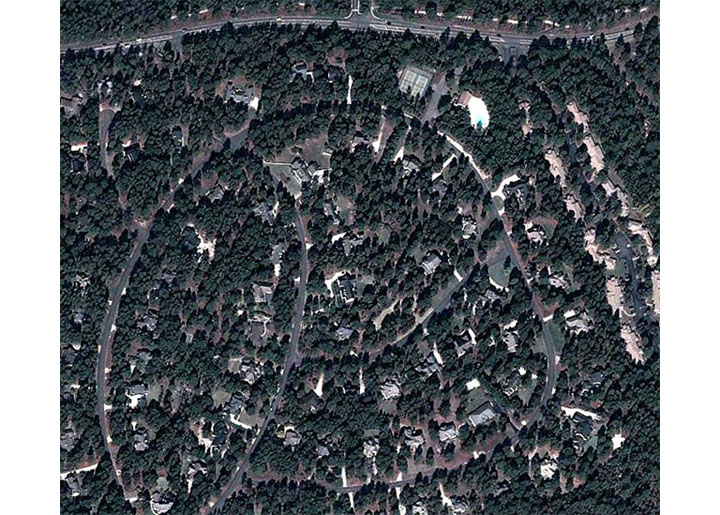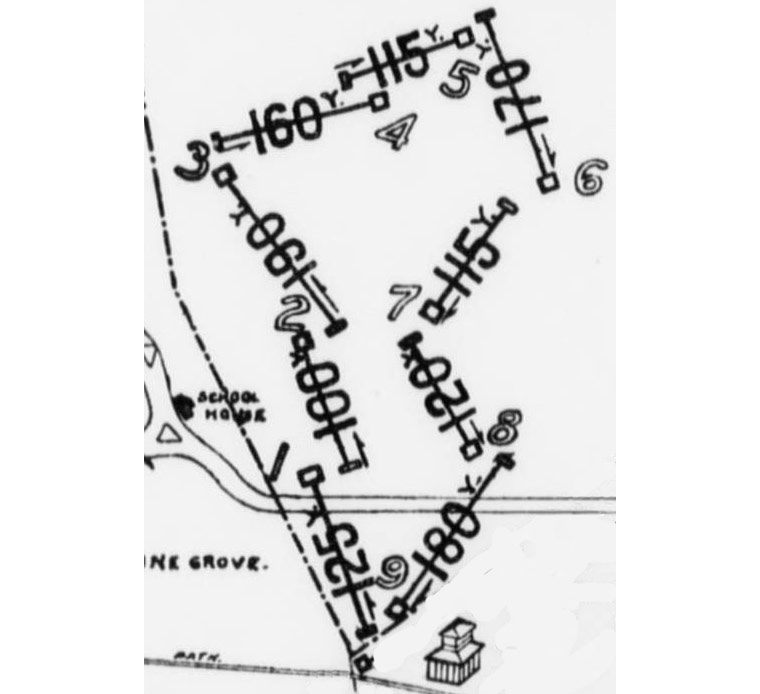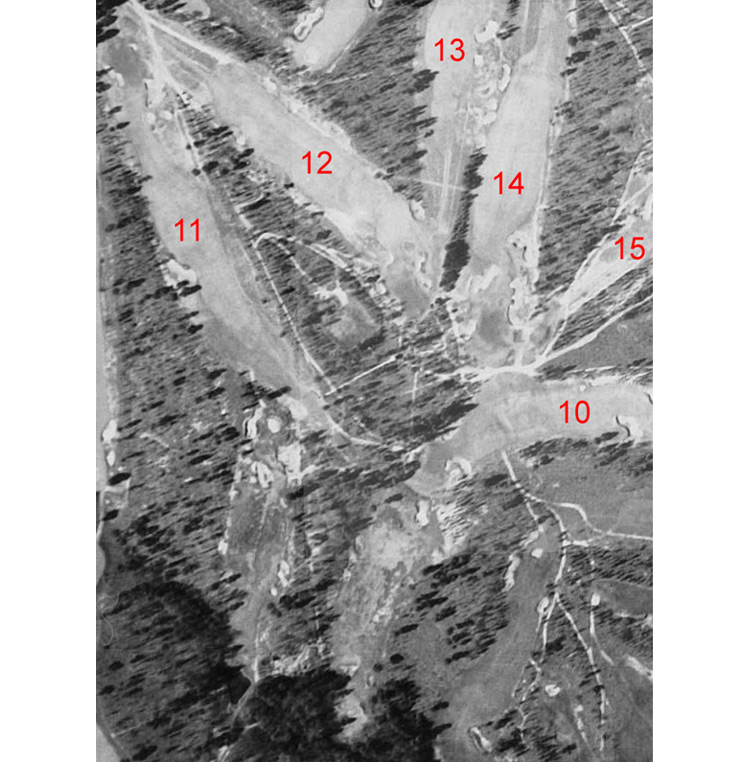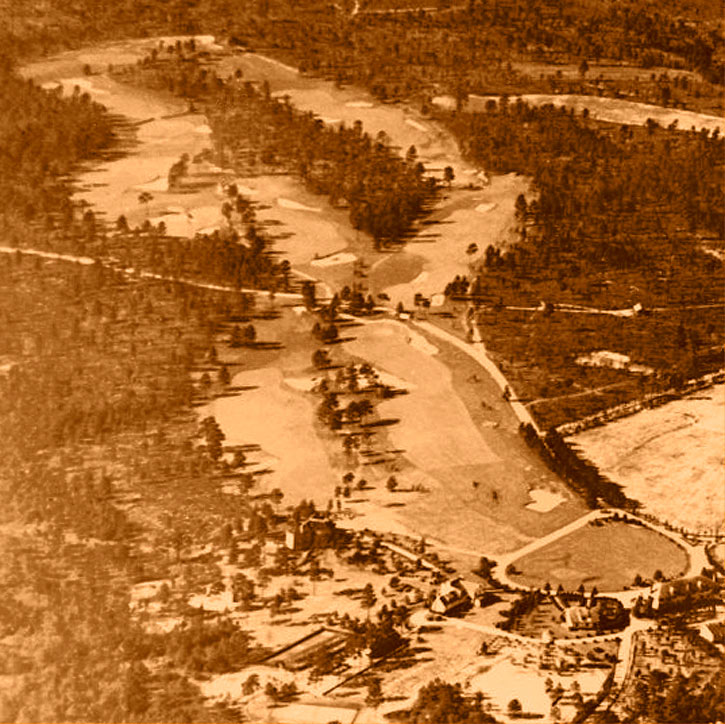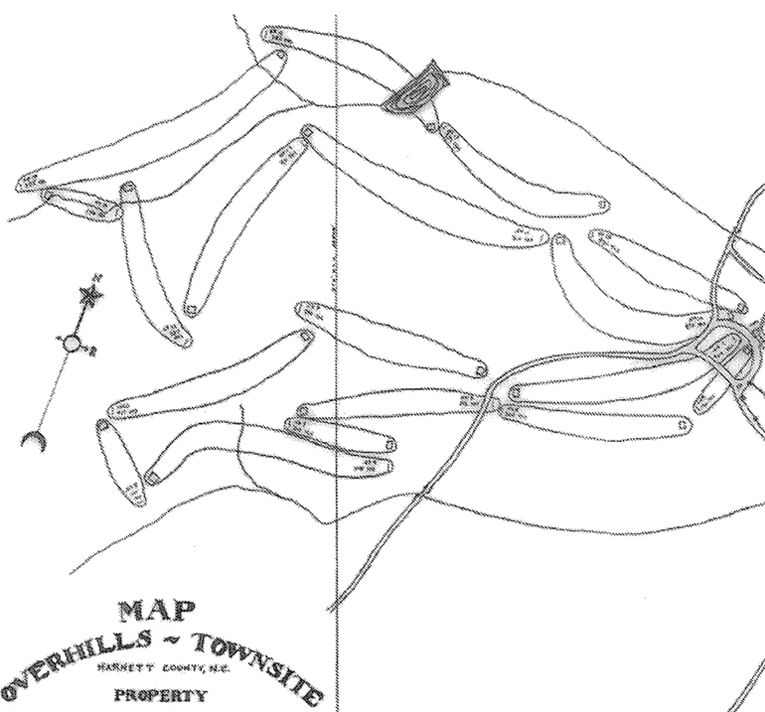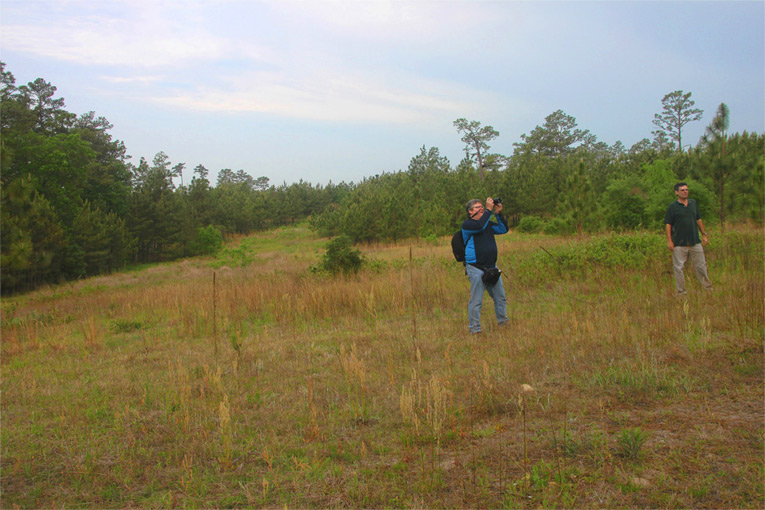Feature Interview
with
Chris Buie
June, 2014
Tell us about growing up in the “Cradle of American Golf”.
As it happened, I was fortunate to be close to a number of memorable episodes. In a roundabout way, the articles on here were derived from the remnants of those experiences. Rather than bore you with a lot of personal facts and stories, a brief look at one of the more affecting scenes can probably do a better job of getting that point across.
One day my brother, Henry, and I went to a ceremony they were having behind the 4th green of No. 2. We got to sit right beside Jack Nicklaus. This would be when Nicklaus was in his prime. To a golfing kid, it was like getting to sit beside Zeus. You can pretty well imagine what it was like. But you would have trouble picturing the overall experience.
Why?
Right there on the other side of Nicklaus that day were Ben Hogan, Sam Snead, Byron Nelson, Arnold Palmer, Gary Player and Gene Sarazen.

Chris’s brother Henry is the blonde in the white shirt bottom left. Chris is in the blue striped shirt behind Nicklaus. Snead’s dome is above Sarazen with Nelson just right of the frame. And, let’s not forget Patty Berg on Hogan’s left.
Contrary to the accounts of many highly respected journalists, the group in the photo was not cheering a recount of my junior golfing exploits – such as almost finishing in the top ten of the boy’s club championship. They were cheering the President of the United States.
Your just released book “The Early Days of Pinehurst” (which you can purchase here) is written in a different manner than most accounts of Pinehurst.
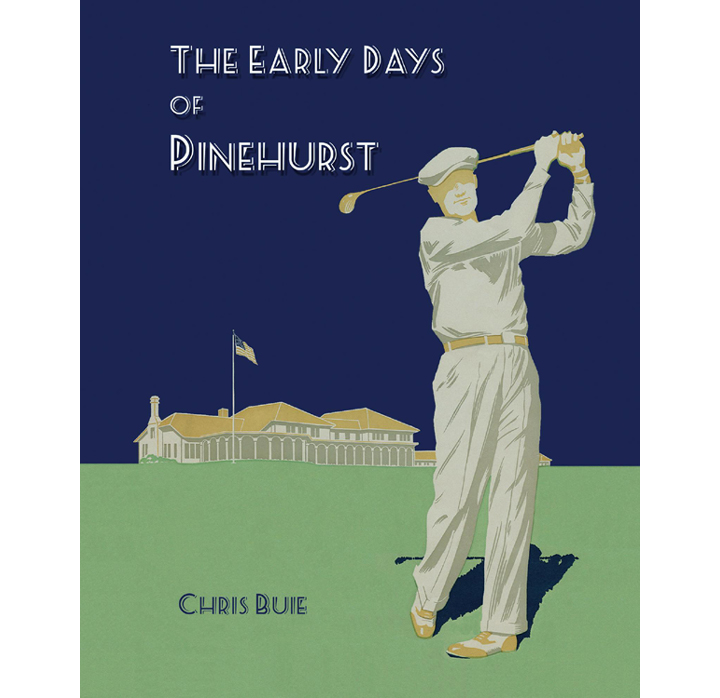
The cover is a modified version of the 1936 PGA Championship program. The PGA of America kindly granted permission for its usage.
That’s true. It’s an attempt to tell the Ross era of the Pinehurst story with something of an individualized voice. The main emphasis was on trying to create a compelling experience for the reader. Tracing the steps which led from nothingness to the spectacular was endlessly fascinating to look through. But, actually, experimenting with language was at least as important while putting the book together. It’s intended to some degree for the general reader as well as golfers. So, part of the experiment was trying to balance the writing in a way which would work well for both.
Whether or not the exercise worked or sort of worked, it was a pleasure to move the story lines around in various patterns. Considering the subject, it wouldn’t really suit to get too far out to sea with the descriptions. At the same time, there are certain elements of the sport and of this particular story which call for something more atmospheric. One of the challenges was in trying to guide it between those differing points. Dialing back some of the overly colorful descriptions that initially came out was almost as interesting as attempting to capture the parts of the story which bordered on the transcendent.
Since so much has been written about the area, almost all the material in the book is from stories which few know. There’s not much point in just trotting out the same old facts. However, there was quite a bit of territory out there beyond the common narrative. For instance, one of the chapters of the book concerns a private eighteen hole course Ross designed for a shipping magnate named James Barber. Nobody has been able to say whether or not it was built on the land he owned between Pinehurst and Southern Pines, but the book illuminates that mystery in a curious way. The evidence was there all along and had been looked at many times. I’d looked at it several times myself without realizing it. Then there was a moment of clarity.
This was the image which showed what happened with the Barber course.
It’s a pretty nice looking course, isn’t it? The only thing is…you’re looking at the wrong course. That’s an aerial of Pine Needles.
But look at the very top of the aerial.
That’s the Barber course.
How do we know that’s the Barber course? Click the link to the Tufts Archives: link
Here’s how the local newspaper described that area:
“He has designed a picturesque tract on the summit of the hills which gives a constant outlook all over the country. Below the fairways the reservoir with its sixty acres of open lake spreads out along the whole west side of the course. From the high spots on the course Southern Pines is visible, Carthage, the territory around Vass, Pinehurst and into the indefinite distance in all directions.”
Here’s how that “picturesque tract on the summit of the hills” which peers “into the indefinite distance in all directions” looks today:
Although it’s largely implicit and lets the reader come to their own conclusions, one of the primary themes which runs throughout the book concerns the manner in which we Americans manage the bright cultural points that were left behind. As we’ve seen with the restoration of No. 2, there is the opportunity to turn around much of the mishandled areas…and do something brilliant. Why would we not want to move along in that direction as much as feasible? If you thought the consequences of our temporary custodianship of these areas were not profound and would not affect many, many lives then you’d be grossly mistaken. Don’t you think it would be nice if, at the end of your days, you could look over your shoulder and know you played a some small part in leaving a few environments behind where people could flourish for years on end?
How would you characterize the overall story of early Pinehurst?
The early Pinehurst story was more complex than you’d suppose. There were many extremely serious setbacks. The character of the main personalities during the formative years was revealed partly in how they wrestled with that steady stream of adversities. In a way, it reminded me of the Odyssey where they set off on this epic journey and encounter all manner of unexpected beasts and whatnot. By the end of their days, Leonard Tufts and Donald Ross had created a golfing world that remains one of the sport’s most shining chapters.
Establishing an American icon was one thing. But, what grew out of that was probably even more significant. Almost every town in America has a golf course. That was not the case when the village started. Pinehurst was perhaps the primary template or inspiration for what became one of the fundamental elements of American civic life. It’s not just that a lot of people ended up playing the game. It’s that the nature of the game had not only a health promoting but a civilizing effect on an expansive scale.
With the unique back-to-back Opens upon us, there are going to be many articles written about No. 2. Give us your take.
The book discusses various aspects of the course with the technical side only being part of it. As this is a website which focuses on course design, let’s go more into the details of the design than the general reader of history or Americana would be interested in.
The story of No. 2 is not like any other course. It went from the ultra primitive to the ultra sophisticated. Ross worked on it from 1901-1948. That is, the course received an enormous amount of attention from a genius for almost exactly half a century. It went through a number of very different configurations and styles before reaching its ultimate form. That half century journey to golfing immortality included mistakes and seemingly insurmountable difficulties.
How many course owners of today would let their architect keep making big changes (for decades) to a course they had built? Probably none. However, Leonard Tufts did. A significant amount of credit for the course must go to him for believing in Ross and enabling him to work on it until it was perfected.
Although 1907 was the official opening for the course, it actually opened in 1901 as a nine holer. That development was due to the unexpected popularity of the game. The earliest configuration only covered the land of today’s 1st and 18th holes. Today’s player may be amused to know the original purpose was to provide something less strenuous than No. 1 Course. “Suitable for beginners” was how it was originally advertised. Some of the early advertising didn’t worry about accuracy too much, but in that case it was correctly characterized.
Ross arrived in Pinehurst in 1900, so he got busy right away developing the golf. In 1903, he almost doubled the length. By 1907 he had it configured largely as it would remain until the 1930’s. No. 3 was actually a better course than No. 2 until then.
The early 18 hole configuration of No. 2 went down on the land where No. 4 Course is today. It’s interesting to note that the part of the original 18 is under a lake now.
Here’s a look from 1939 as the former holes were fading away.
Ross did the right thing getting rid of that part because it went down and back up a very steep hill. Straight up a steep hill rarely makes for a good hole. Also, going down there took you into a swampy area.
Please provide an example of a modification to No. 2 which reflects Ross’s evolving design philosophy.
Have a look at the 12th hole. What do you see?
Obviously, the one on the left is earlier because of the sand green. But the part which shows an advancing design philosophy is the cross bunkering. In the earlier image it goes all the way across the fairway. You would just have to make sure your drive was short of that. Not so much in the way of options or thinking – just leave it short of the bunker. In the later version the left side of the fairway has been opened up to tempt the longer player. You could gain an advantage but in order to do that you had to risk putting it in the native area. The later version is much more strategic and chess like. It’s a far more interesting journey when thought is required. So, this is an example of the sort of refinements he made.
How do you think the pros will handle the wire grass and the “rustic areas” during the 2014 Opens?
A part of any U.S. Open is seeing how the player responds to elements they don’t usually see – such as unusually deep rough. Wiregrass is, of course, not something they are used to. Presumably, it may be difficult for some to grasp the idea of a course which emphasizes a sense of adventure rather than almost complete predictability. Complete predictability is just not that interesting or entertaining. These Opens are going to be highly entertaining.
When they do venture into the wiregrass they will encounter any number of scenarios. They may just play off hardpan which is not so difficult – although those shots are known to shift players a bit from the robotic approach to shotmaking and thus produce undesirable results. They may be in one of the plants and thus have to just try to whack it back into the fairway. A fairly common occurrence is the indeterminate lie. That is, there may be a small amount of interference with either the stance or the swing. Those are the situations where you can’t quite tell how the shot will go – or even what type of shot to attempt. We will be seeing a lot of puzzled expressions on the faces of the players.
What’s really being tested or revealed is the players adaptability and attitude. These rustic areas will take the player outside of their normal framework. That’s largely the point. Some players will be lured into a negative frame of mind and get fixated on what they perceive to be unfairness. If they get entrenched in that frame of mind then they are only hurting themselves.
The thing about the rustic areas and also the more difficult collection areas is that if you are in there you either really mishit the shot or you chose to play a shot which brought those areas into play. One of the primary things Ross was trying to do was make thinking and strategy a key element of the game. The game is far more interesting that way than it is when there is little, if any, consideration to the shots being played. So, he spent an enormous amount of time making No. 2 a chess like proposition.
“The object of golf now on will be toward an even greater science of stroke. More and more he will be forced to use his head as well as his hands and arms.” – Donald Ross
The fairways are incredibly wide by U.S. Open standards. If you are a world class player then you shouldn’t have much trouble hitting it in the fairway. If you choose to press for an advantage distance wise then you will sometimes bring the wiregrass into play. Nobody is forcing them to hit a driver on those tee shots. Nobody is making them go for the flag when it is near one of the dangerous drop offs. That’s their strategic decision. If there are deficiencies in their strategic thinking then Mr. Ross will have no problem at all making that entirely clear.
Your book delves deeply into the No. 2 story but let’s move on to another favorite topic of yours: the old Rockefeller estate next to Pinehurst named Overhills.
The first visit out there in 2010 was just for a lark really. I’d only vaguely heard of it. My understanding was that they just put up a little golfing area for the Rockefellers. The expectation was to find a run of the mill smallish course – not to stumble on something profound. I clearly remember being struck by the contours of the terrain the first time out. The way the land moved around the knolls and ridges was mesmerizing. But it wasn’t until after reviewing the old course maps and walking through the unkempt area following Ross routing that it became clear the course was a masterwork.
To make sure I wasn’t just getting carried away with notions I had some highly knowledgeable people look out there to confirm the quality. They did. After that I dug deeper into the details and became even more impressed. Ross refined the course at least twice. He did drawings for both. They are extremely detailed drawings. Bunker depths and mounding heights are measured to the inch.

The 203 yard par 4 3rd hole. (Ross crosses his t’s off to the side) – Courtesy of the Ft. Bragg Cultural Resources Center
In retrospect, it’s not difficult to see why it turned out to be so exceptional. All the elements that could give rise to such a creation were in place:
-3,500 acres of ideal sandy golfing land
-An unlimited budget
-An entirely free hand
-Donald Ross
The only request they made was for Ross to create a course “that will have no superior”.
It was an ideal set up and Ross put his maximum level of concentration on it.
While examining the design I dug into the history of the estate. That turned out to be highly uncommon, as well. Rather than reiterate that here you can have a look at the original thread if you like:
https://golfclubatlas.com/forum/index.php/topic,46197.0/
All in all, the entire saga was one of the more fascinating tales I’ve heard. This tale will undoubtedly be greatly enhanced with Bill Fields’ upcoming article in the U.S. Open preview edition of Golf World. It certainly was enhanced by John Paul Newport’s expertly drawn portrait of the estate. Donald Ross would have been delighted that it was these two first-tier writers telling the story.
Is the land in tact enough for the Ross course to be restored?
Absolutely. And if it was restored with the same type of virtuoso performances which occurred at Pinehurst No. 2 and Mid Pines then you would understand why I’ve made so much noise about the place. The corridors as well as the ridges and rolls are still there. And with two sets of extremely detailed sketches you can put it back as he intended it with precision.
The only indeterminate element would be the greens. Grass greens were put in at some point but no documentation or usable photography of that has turned up at this point. That’s not bothersome because there are individuals who understand Ross green design style in such depth that they would have no trouble whatsoever forming something that would fit, not just well, but brilliantly.
Once restored, you think the estate could be used for Wounded Warriors as a primary consideration?
Yes. We just had the longest period of war in the country’s history. If you look at the information you’ll see that there is no question that the response to wounded vets has to be improved. It can be done more effectively with less money spent, actually. There are a number of program options and what I’d recommend, at least in part, is an emulation of the Resilience and Restoration Center in Texas. It’s a prototype program that has proven to be far more effective than standard treatment regimens – with less money spent. The former Rockefeller estate would be an ideal for such a place.
Which courses do you usually play in the area?
Lately I’ve mainly been playing Southern Pines G.C. and Mid Pines the most. The audience on GCA is well aware of the allure of Mid Pines – especially after Kyle Franz and that roving band of artists did such a stellar job.
SPGC is a course that I never get tired of playing. The terrain is so varied and interesting. The manner in which Ross used the landscape is really quite something. One golf super guru told me if SPGC received the same treatment as Mid Pines did, it would be the second best course in the area. Well, that’s the course I play mainly. In addition to the rolling grounds it has a far more substantial historic dimension that most know.
In conclusion, since you have seen all the big events in Moore County over the past couple of decades, do you have a favorite memory?
Yes, sort of. I was playing Pine Needles the day after the 2007 Women’s Open. On 18, I had a 6 iron into the green and hit it way right. It bounced off the angled top of the grandstand and ended up on the edge of the green. I try not to boast but I don’t think there are many who could pull that shot off!
The End





